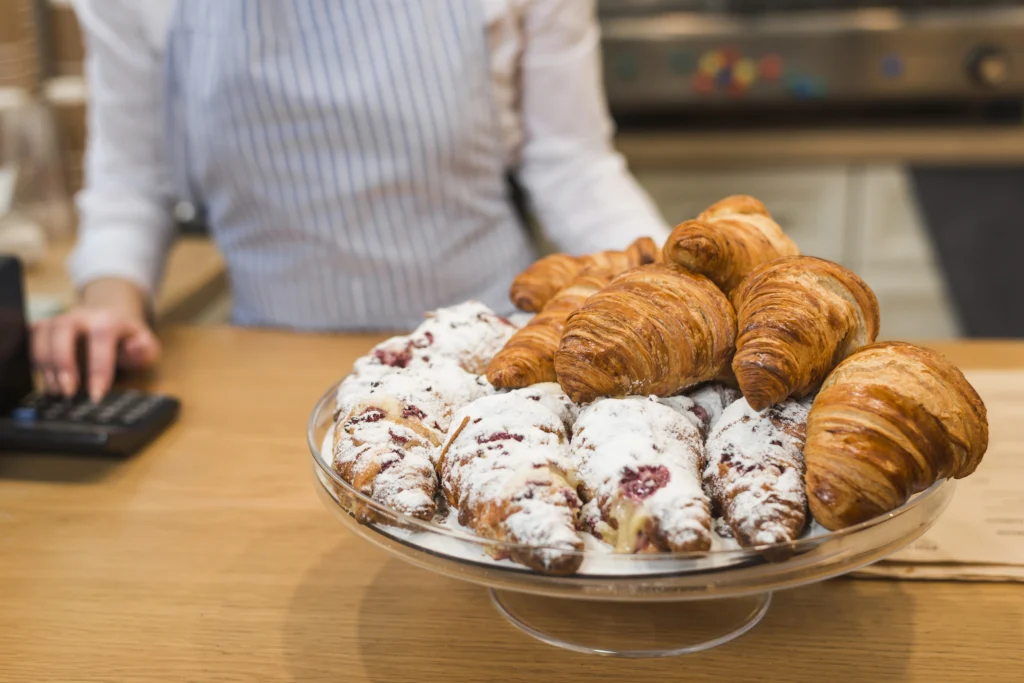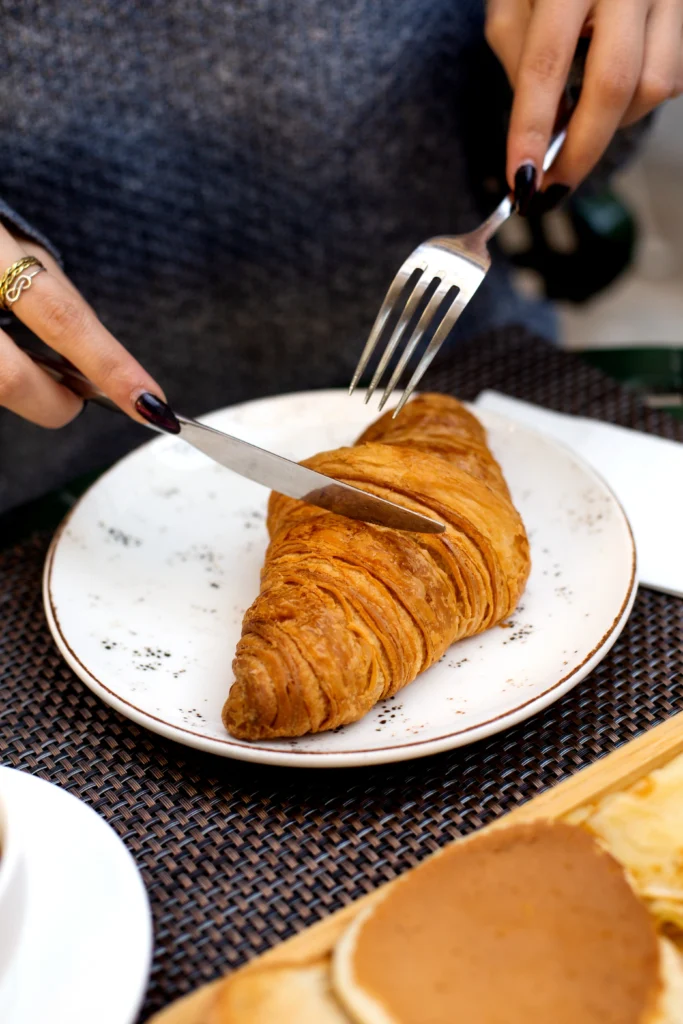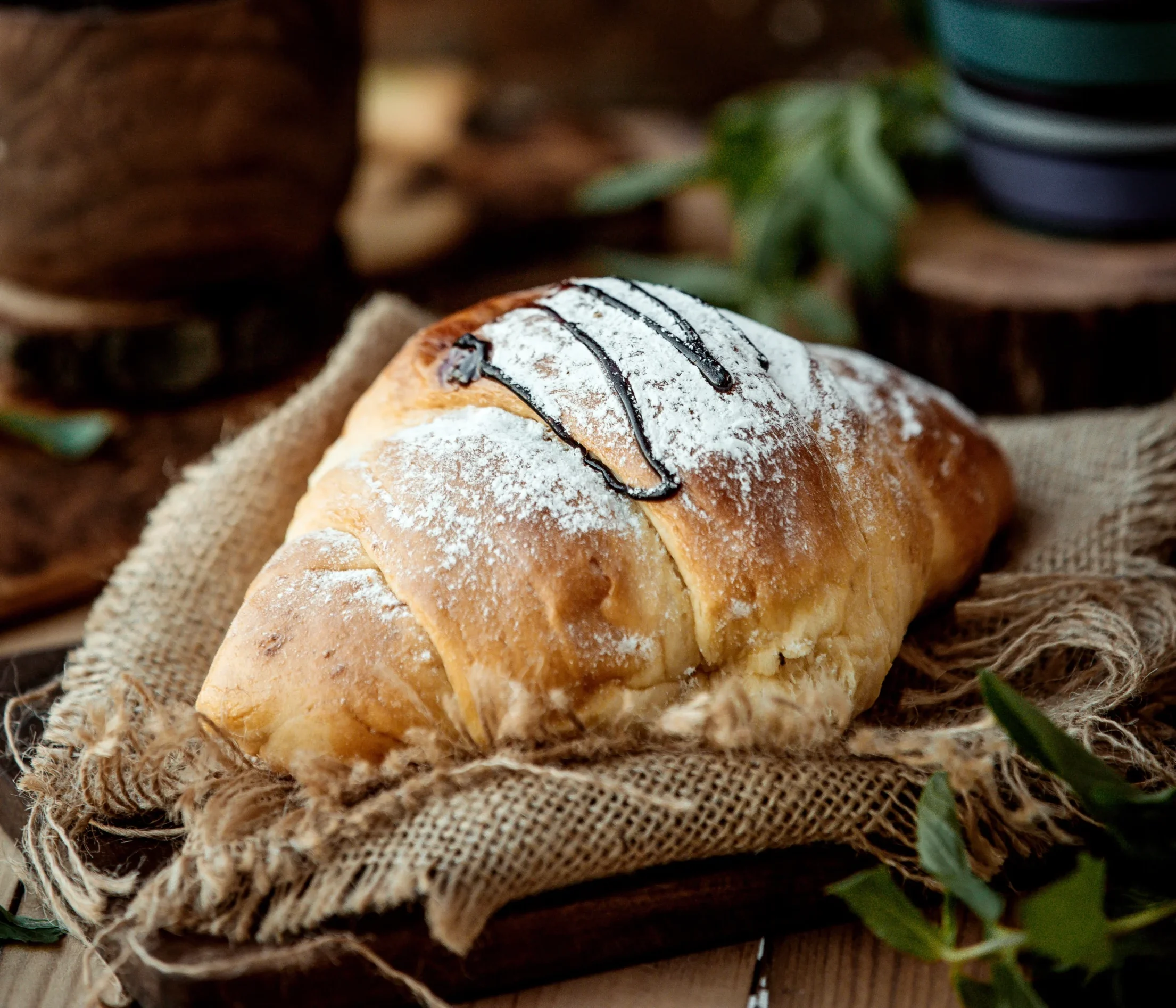Imagine waking up to the warm, buttery aroma of freshly baked Swiss Gipfeli wafting through your kitchen. The golden, flaky layers seem almost too perfect to be real, yet with the right recipe and a little patience, you can recreate this Swiss pastry at home. Whether you’ve enjoyed Gipfeli during a trip to Switzerland or you’re simply craving a new breakfast treat, this homemade recipe will bring the taste of Swiss bakeries straight to your kitchen.
In this guide, you’ll find a simple yet delicious recipe for Gipfeli, step-by-step instructions, expert tips, and even some variations to make your homemade Swiss croissants unique. Let’s dive in!
Table of Contents
What Is Gipfeli? The Swiss Croissant Explained
Before we begin making your own Gipfeli at home, let’s talk about what makes this pastry unique. While croissants are often associated with French cuisine, Swiss Gipfeli has its own distinct characteristics that set it apart.
Gipfeli vs. Croissants: What’s the Difference?
Although both are flaky pastries made with layers of butter, Gipfeli tends to be slightly denser and less buttery compared to a traditional croissant. The dough of Gipfeli is usually made with a bit of milk, giving it a soft texture that pairs perfectly with coffee or tea. On the other hand, croissants have a lighter and airier texture, due to their use of more butter and a slightly different technique.
Why Swiss People Love Gipfeli
In Switzerland, Gipfeli is a beloved breakfast staple. It’s typically enjoyed with coffee or hot chocolate, making it a comforting and satisfying way to start the day. It’s often served alongside a variety of jams, honey, or cheeses. Whether you’re enjoying it in a Swiss café or baking it in your own kitchen, Gipfeli brings the perfect balance of crispy and soft, making it a breakfast treat worth savoring.
Essential Ingredients for Homemade Swiss Gipfeli
The beauty of Gipfeli lies in its simplicity. You don’t need a long list of complicated ingredients, just a few basic staples that come together to create this mouthwatering treat.
Here’s what you’ll need:
Gipfeli Dough Ingredients
| Ingredient | Quantity |
|---|---|
| All-purpose flour | 500g (4 cups) |
| Butter (cold, unsalted) | 250g (1 cup) |
| Milk (lukewarm) | 250ml (1 cup) |
| Sugar | 50g (1/4 cup) |
| Active dry yeast | 7g (1 packet) |
| Salt | 1 tsp |
| Egg (for egg wash) | 1 |
These ingredients are the backbone of your Gipfeli dough, but feel free to get creative with fillings if you want to add a twist!
Optional Fillings & Variations
If you want to give your Gipfeli a personal touch, here are some delicious options for fillings and variations:
- Classic Plain Gipfeli: Keep it simple and enjoy the buttery goodness of plain Gipfeli.
- Chocolate-Filled Gipfeli: Add a square of your favorite chocolate inside each triangle before rolling.
- Almond-Filled Gipfeli: For an extra indulgence, use almond paste for a sweet and rich filling.
- Whole Wheat Gipfeli: Substitute part of the all-purpose flour with whole wheat flour for a healthier version.
Now that you have your ingredients ready, let’s get started with the recipe!

Step-by-Step Guide to Making Gipfeli at Home
Baking homemade Gipfeli might seem intimidating, but it’s actually easier than you think! By following these clear steps, you’ll have freshly baked Swiss croissants ready to enjoy in no time.
Step 1 – Preparing the Dough
Start by activating the yeast. In a small bowl, combine the lukewarm milk and sugar. Sprinkle the yeast on top and stir gently. Let the mixture sit for 5-10 minutes. You should notice that the yeast begins to bubble and foam, which means it’s ready to use.
In a large bowl, mix together the flour and salt. Once the yeast mixture is ready, pour it into the flour mixture and stir until it forms a dough. You can either mix by hand or use a stand mixer with a dough hook.
Once your dough comes together, turn it out onto a lightly floured surface and knead it for 5-7 minutes. The dough should be smooth and elastic, but not sticky. If it’s too sticky, sprinkle a little more flour, a tablespoon at a time. Once the dough is ready, place it back in the bowl, cover it with a clean towel, and let it rise in a warm spot for about an hour, or until it has doubled in size.
Step 2 – Rolling and Layering Butter
Once your dough has risen, it’s time to create the signature flaky layers! Roll the dough out into a large rectangle on a lightly floured surface. The dough should be about 1/4 inch thick.
Cut your cold butter into small cubes and place them on one half of the dough. Fold the other half of the dough over the butter, then seal the edges to keep the butter inside. Using a rolling pin, gently roll the dough out into a larger rectangle, about 1/4 inch thick.
Now, fold the dough into thirds, like folding a letter. Turn the dough 90 degrees and roll it out again into a large rectangle. Fold it into thirds again, wrap it in plastic wrap, and refrigerate for 30 minutes. Repeat this folding and chilling process two more times. This will give your Gipfeli that wonderful flaky texture.
Step 3 – Shaping and Proofing
Once the dough has been properly chilled and folded, it’s time to shape your Gipfeli. Roll the dough out one final time into a large rectangle. Using a sharp knife or pizza cutter, cut the dough into triangles (roughly 3-4 inches wide at the base).
To shape each Gipfeli, gently stretch the dough and roll it up starting from the wide end. Place each rolled-up pastry on a baking sheet lined with parchment paper. Make sure to leave enough space between each one for them to expand while they bake.
Let the shaped Gipfeli rise for 30-45 minutes, or until they have doubled in size.
Step 4 – Baking to Perfection
Preheat your oven to 200°C (400°F). Before baking, brush each Gipfeli with an egg wash to give them that golden, glossy finish. To make the egg wash, beat the egg with a tablespoon of water and brush it over the top of each Gipfeli.
Bake for 12-15 minutes, or until the pastries are golden brown and crispy. The smell of freshly baked Gipfeli will fill your home, and you won’t be able to wait to take that first bite!
Expert Tips for the Best Homemade Gipfeli
Here are a few tips to ensure that your Gipfeli turn out perfectly every time:
- Use Cold Butter: Cold butter is essential for creating the layers in your dough. Don’t let the butter soften before you fold it into the dough.
- Chill the Dough Between Folds: Don’t skip the chilling steps. Chilling the dough helps solidify the butter and makes the layers flakier.
- Don’t Rush the Proofing: Be patient while the dough rises. Proper proofing is key to achieving a light, airy texture in the final product.
- Monitor the Oven Temperature: Every oven is different, so keep an eye on your Gipfeli while they bake. If they start to brown too quickly, lower the temperature slightly.
Serving Suggestions & Best Pairings
Gipfeli is delicious on its own, but it’s even better when paired with some of these tasty accompaniments:
- Swiss Hot Chocolate: There’s nothing like a rich, velvety Swiss hot chocolate to complement your Gipfeli.
- Fruit Jams and Honey: Spread your Gipfeli with sweet fruit jams or honey for an extra burst of flavor.
- Coffee or Tea: Pair your Gipfeli with a warm cup of coffee or tea to create a comforting breakfast experience.
- Cheese: For a savory twist, enjoy Gipfeli with Swiss cheese and cured meats.

Common Mistakes and How to Avoid Them
Here are some common pitfalls when making Gipfeli and how you can avoid them:
- Dough Doesn’t Rise Properly: Ensure your yeast is fresh and that the liquid is lukewarm, not hot. Too hot liquid can kill the yeast.
- Butter Layers Are Too Soft: Keep your butter cold throughout the process. If it melts too early, the layers won’t form properly.
- Over-kneading the Dough: Knead the dough only until it’s smooth and elastic. Over-kneading can result in dense, heavy Gipfeli.
Frequently Asked Questions (FAQs)
What is the difference between Gipfeli and a croissant?
Gipfeli is less buttery and slightly denser than a traditional French croissant. The dough is softer and slightly sweeter, making it a unique Swiss treat.
Can I make Gipfeli dough ahead of time?
Yes, you can prepare the dough the night before and store it in the fridge overnight. This will allow the dough to rest and develop even better flavor.
How do I store leftover Gipfeli?
Store leftover Gipfeli in an airtight container at room temperature for up to 2 days. You can also freeze them for up to a month. To reheat, simply warm them in the oven for a few minutes.
Can I make Gipfeli without yeast?
While traditional Gipfeli uses yeast for that flaky, airy texture, you can make a quicker version using baking powder. However, the texture will be slightly different.
Conclusion
Making homemade Gipfeli doesn’t need to be intimidating. With the right ingredients, a little patience, and some practice, you can enjoy the taste of Swiss croissants right in your own kitchen. Whether you stick with the classic version or experiment with chocolate or almond fillings, these flaky, golden pastries are sure to become a breakfast favorite. So, roll up your sleeves, start baking, and enjoy the delicious results!
Have you tried making Gipfeli at home? Share your experience and any variations you’ve tried in the comments below! We’d love to hear from you. Happy baking!

